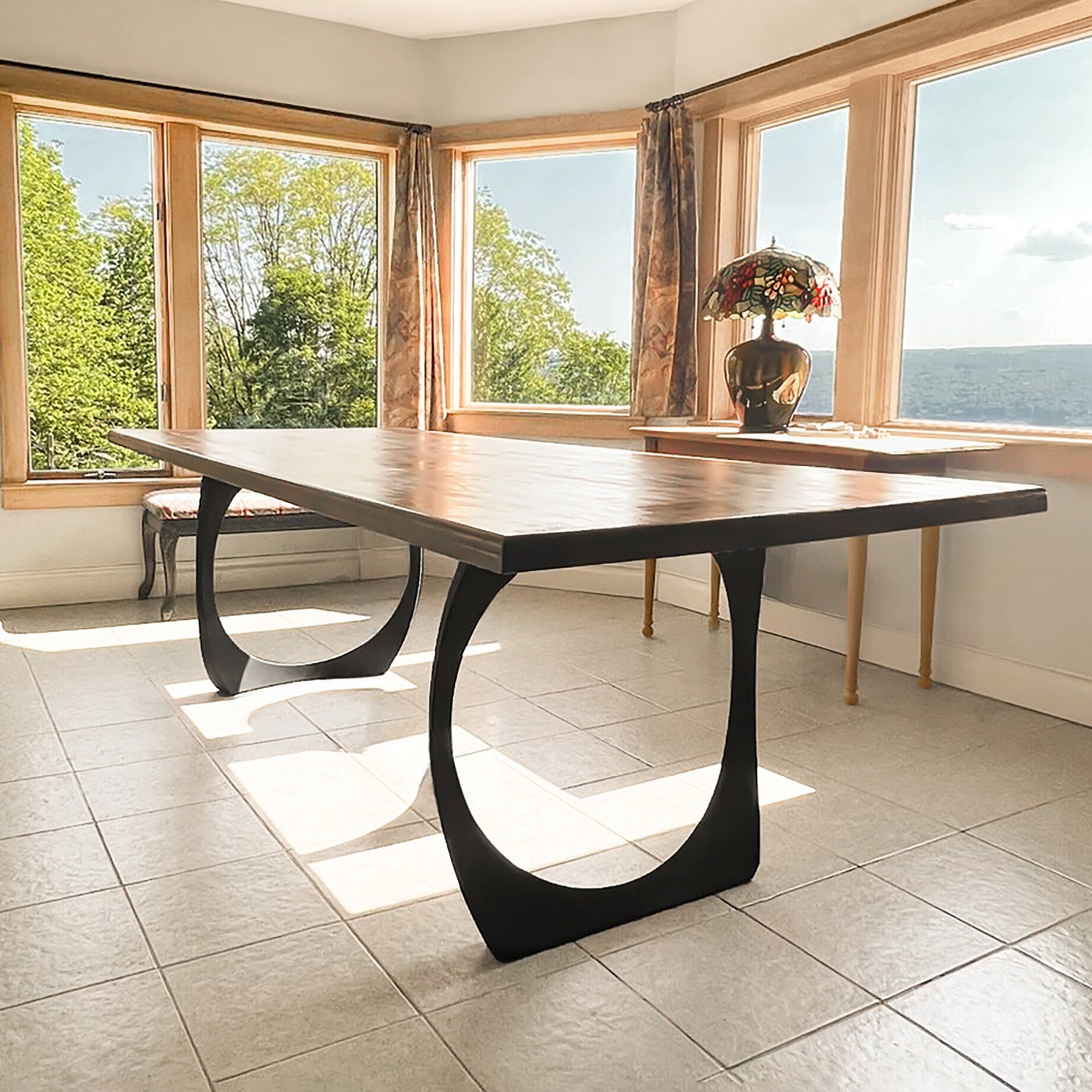The Ultimate Guide to Choose Resilient Dining Room Table Legs
The Ultimate Guide to Choose Resilient Dining Room Table Legs
Blog Article
A Comprehensive Look at Table Leg Styles: Finding the Ideal Suit
Choosing the right table leg design is crucial for both aesthetic charm and useful functionality. Conventional four legs supply timeless beauty and security, while the stand base provides enhanced legroom and a modern appearance. For those with larger tables, trestle legs make certain durable support, whereas barrette legs present a mid-century contemporary ambiance with their minimal style. The x-shaped legs mix modern style with boosted stability. Each of these alternatives brings special advantages, making the selection greater than simply a matter of preference. Check out better to discover which style completely enhances your eating space and way of life.
Traditional 4 Legs
Among the various kinds of dining table leg designs, the traditional four-leg layout remains an ageless selection for lots of households. 4 legs supply balanced support, making sure the table stays secure and capable of bearing considerable weight (dining room table legs).
From a visual perspective, the standard four-leg layout can be easily adapted to different interior styles. Whether crafted from wood, metal, or a mix of materials, these legs can be elaborately carved, streamlined and minimalistic, or anything in between. Their flexibility allows them to enhance both rustic and contemporary setups flawlessly.
Additionally, the uncomplicated structure of the four-leg layout assists in convenience of motion and placement within an area. Unlike even more complex bases, this style lessens blockages, offering ample legroom for restaurants. In summary, the standard four-leg table leg style weds sustaining elegance with functional functionality, making it an astute option for those looking for both kind and feature in their dining furniture.
Stand Base
Commonly commemorated for its stylish and space-efficient design, the stand base is a distinguished option to the typical four-leg arrangement in eating table leg styles. This unique base usually includes a solitary central column supporting the table top, which can differ in kind, from ornately sculpted timber to smooth, modern steel. Among the key benefits of the pedestal base is its capability to optimize legroom and seating adaptability. Without edge legs, restaurants are managed higher liberty of activity, making it an excellent choice for round and oblong tables that promote more intimate and comprehensive events.
Additionally, the pedestal base's main assistance can take care of significant weight, permitting using heavier table tops, such as marble or thick hardwood. This toughness paired with its aesthetic convenience makes the stand base a preferred option in both standard and contemporary interior setups. It can seamlessly incorporate with various style themes, from classic style to minimal modernity. The central column itself supplies a canvas for detailed styles and artistic expressions, including an element of visual rate of interest under the table. In recap, the stand base incorporates functionality with design, making it a fine-tuned and functional alternative for diverse dining settings.
Trestle Legs
Trestle legs give a robust and timeless structure for dining tables, defined by their horizontal cross-bracing and tough support beam of lights. Stemming from medieval times, this style has evolved yet preserved its vital framework, making it a perennial fave in both conventional and modern setups. The central trestle beam, frequently supported by two or even more upright articles, uses exceptional security, permitting larger table sizes without the need for extra legs.
A substantial advantage of trestle leg tables is the ample legroom they provide. Unlike tables with 4 corner legs, the lack of obstructions at the table's edges supplies unimpeded space for chairs and restaurants, enhancing convenience and read this access. This makes trestle tables suitable for suiting larger events, whether in an eating space or a banquet hall.
From rustic farmhouse to smooth contemporary styles, trestle legs can be tailored to fit specific preferences. Their enduring allure and useful benefits make trestle legs a compelling option for those seeking both design and functionality in their dining table.
Hairpin Legs

The appeal of barrette legs depends on their simplicity and convenience - dining room table legs. Available in a range of materials, consisting of steel and brass, they can be finished in many colors to complement various interior designs. Whether combined with a rustic wooden tabletop or a modern glass surface, barrette legs effortlessly mix performance with a touch of vintage beauty
Longevity is another notable attribute of hairpin legs. Despite their fragile look, these legs are engineered to bear considerable weight, guaranteeing the eating table continues to be steady and protected. Furthermore, they are reasonably easy to set up, making them a popular choice for DIY enthusiasts and specialist furnishings manufacturers alike.
X-Shaped Legs

Created from products such as steel, wood, or a mix of both, X-shaped legs can be tailored to match different style choices. Steel legs frequently lend a sleek and commercial feeling, ideal for loft-style apartment or condos and modern-day dining spaces. On the various other hand, wooden X-shaped legs provide a warmer, extra rustic allure, suitable for farmhouse or diverse insides. The versatility in materials enables home owners to tailor their table to better fit their overall design system.
Moreover, the design behind X-shaped legs makes sure even weight circulation, minimizing the risk of wobbling and enhancing sturdiness. This makes them particularly appropriate for bigger table that require added assistance. Fundamentally, X-shaped legs blend sensible design with contemporary appearances, making them a classic choice for diverse dining environments.
Conclusion
A detailed understanding of dining table leg designs reveals the unique qualities and advantages of each style. Trestle legs guarantee robust support for larger tables, and barrette legs introduce a mid-century modern-day aesthetic.
Report this page